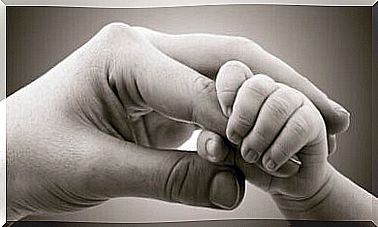Psychological Techniques To Enhance Behavior

Psychological techniques to increase behavior are based on behavior modification, a theoretical and methodological orientation directed towards intervention. Based on the knowledge of experimental psychology, behavior modification considers that normal and abnormal behavior are governed by the same principles.
Behavior modification uses procedures and techniques that involve objective evaluation and empirical verification, to reduce or eliminate maladaptive behaviors and to introduce or increase adaptive behaviors. It is not only based on observable behaviors, but also on cognitive aspects and basic processes involved in its origin, development, maintenance and change.
Behavior modification techniques can be classified into three groups:
- Techniques for implementing a pipeline
- Techniques to increase a conduct
- Techniques to reduce a conduct
In this article, we will focus on psychological techniques for enhancing behaviors.

Positive and Negative Reinforcement Techniques
positive reinforcement
A positive reinforcement is a stimulus whose contingent presentation to a behavior gives rise to an increase or maintenance of it. The term contingency refers to the relationship of dependence between a behavior and the stimuli that precede and/or follow it.
negative reinforcement
Negative reinforcement consists of removing or reducing a supposed aversive stimulus or preventing the loss of a positive reinforcement contingently to a behavior. The objective will be to increase or maintain it.
There are two types of negative reinforcement: escape and avoidance.
- Escape. It consists of removing or reducing a supposed aversive stimulus or preventing the loss of a supposed positive reinforcement contingently to a behavior.
- Avoidance. It consists of presenting a supposed aversive stimulus or removing a supposed positive reinforcement contingently with the non-emission of a conduct. Thus, this increases or remains due to the fact that it contingently prevents or postpones the appearance of an aversive stimulus or the loss of a positive reinforcement.
contingency contracts
A contingency contract is a contract or agreement between two or more parties that establish the responsibilities of each in relation to a certain object or activity. The characteristics of the contingency contract are:
- Give rewards for approximations of desired conduct.
- Rewards should be frequent, but in small amounts.
- The contract must demand and reward achievements.
- The contract must be fair to both people.
- The terms on which the contract is established must be clear.
- The contract must be freely negotiated and agreed between the parties.
- It must specify the desired conduct and the expected reward.
- Reinforcement must be provided in accordance with the terms of the contract.
Types of contingency contracts
There are cases in which the presence of inappropriate conduct basically occurs in one of the parties, but there are many cases in which the problematic conduct is observed in both parties.
In these cases, two types of contracts were used : “quid pro quo” contracts and parallel or bona fide contracts.
- Quid pro quo or exchange contracts. One of the parties agrees to do something in exchange for a certain change in the other party’s conduct. For example, a husband can cook dinner with his wife if she talks to him for 20 minutes daily about his job.
- Parallel or bona fide contracts. Changing one client’s objective behavior has consequences regardless of the other’s changing objective behavior. This type of contract eliminates the problem of who should start to change first. Allows the reinforcement of the change of conduct for the party that complies, even if the other party does not comply.
Evidence is lacking as to which type of contract is most effective.
token saving
Another psychological technique to increase behavior is token economy. It basically consists of delivering tokens (points, vouchers, marks, stars, etc) contingently to the performance or non-performance of certain conducts. Such tokens can be exchanged for a variety of goods, activities and privileges (support boosts).
- Benefits. The tokens can be administered immediately and this should not interfere with issuing the desired behavior. They establish the bridge between the desired behaviors and the delivery of support reinforcements. They are little subject to satiety effects and their number provides a visible demonstration (feedback) of the improvement achieved.
- Limitations. The procedure can become quite complex. Tangible tokens can be stolen, counterfeited or lost. A person’s fellow group members may refuse to work if they are not included in the program, etc.

token properties
We can use plastic tokens, points, valleys, stars, etc. A good record should have the following properties:
- Have an easy-to-understand value.
- Be easy to deliver.
- Be easy to carry.
- It can be identified as the property of the recipient (to avoid the “black market” of tokens in the group).
- Require minimal accounting by the person delivering them.
- Be as distracting as possible. Points or scores are the ones that best meet these conditions. Therefore, with people who understand its meaning, it is better to use points than tangible tokens, unless the latter are more motivating for those involved.
The person learns the value of tokens through verbal explanations. The objective is that the behaviors are maintained through the natural reinforcements of the surroundings and/or by intrinsic reinforcements.
To achieve this, token saving can be combined with other techniques such as social skills training and problem solving.









